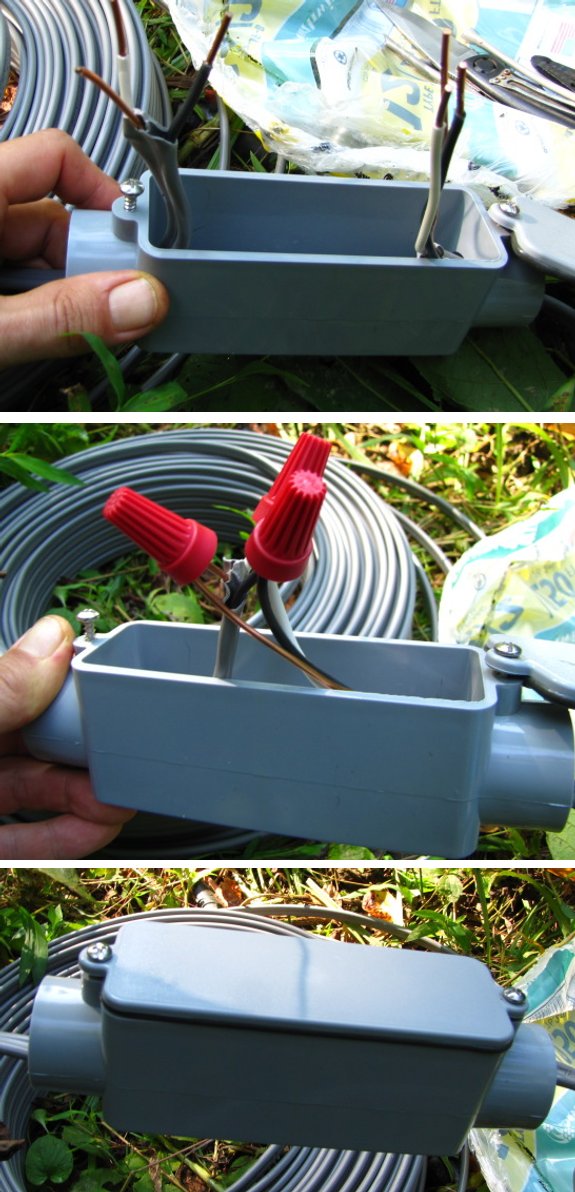
220 volt pump wiring junction box

We've been having some
trouble with our
creek pump and the first
place we decided to upgrade was the quality of the wiring.
You can get a 250 foot roll
of outdoor grade 12 gauge 2 wire for around 138 dollars. Our stretch is
just over 300 feet, which required the above 4 dollar junction box.
The plan will be to silicone
up the ends and mount it on a tree above the point where the flood
waters usually get.
Want more in-depth information? Browse through our books.
Or explore more posts by date or by subject.
About us: Anna Hess and Mark Hamilton spent over a decade living self-sufficiently in the mountains of Virginia before moving north to start over from scratch in the foothills of Ohio. They've experimented with permaculture, no-till gardening, trailersteading, home-based microbusinesses and much more, writing about their adventures in both blogs and books.
Want to be notified when new comments are posted on this page? Click on the RSS button after you add a comment to subscribe to the comment feed, or simply check the box beside "email replies to me" while writing your comment.

The name solar pump is somewhat of a misnomer, since it is generally a electrical pump powered by a PV panel.
As for their power, I see no reason why it couldn't be as powerful as a grid-powered electric pump. Provided you have enough PV panels installed to provide the power.
Using solar panels with a MPP tracker and an inverter you should even be able to power your current pump with "solar power". But I'm pretty sure that the required PV panels and the regulator/invertor would cost significantly more than the pump!